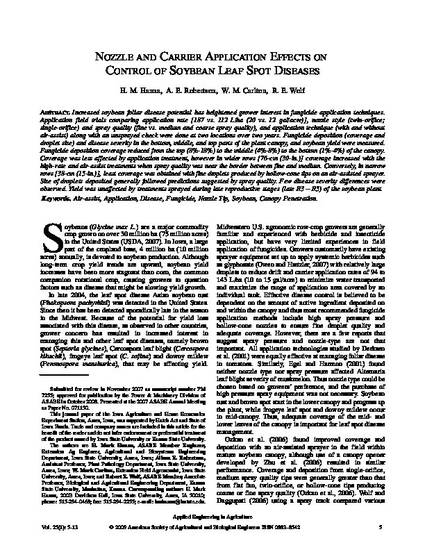
Article
Nozzle and Carrier Application Effects on Control of Soybean Leaf Spot Diseases
Applied Engineering in Agriculture
Document Type
Article
Disciplines
Publication Version
Published Version
Publication Date
1-1-2009
DOI
10.13031/2013.25424
Abstract
Increased soybean foliar disease potential has heightened grower interest in fungicide application techniques. Application field trials comparing application rate [187 vs. 112 L/ha (20 vs. 12 gal/acre)], nozzle style (twin-orifice; single-orifice) and spray quality (fine vs. medium and coarse spray quality), and application technique (with and without air-assist) along with an unsprayed check were done at two locations over two years. Fungicide deposition (coverage and droplet size) and disease severity in the bottom, middle, and top parts of the plant canopy, and soybean yield were measured.
Access
Open
Copyright Owner
American Society of Agricultural and Biological Engineers
Copyright Date
2009
Language
en
File Format
application/pdf
Citation Information
H. Mark Hanna, Alison E. Robertson, W. Mark Carlton and Robert E. Wolf. "Nozzle and Carrier Application Effects on Control of Soybean Leaf Spot Diseases" Applied Engineering in Agriculture Vol. 25 Iss. 1 (2009) p. 5 - 13 Available at: http://works.bepress.com/alison-robertson/130/

This article is from Applied Engineering in Agriculture 25 (2009): 5–13, doi:10.13031/2013.25424. Posted with permission.